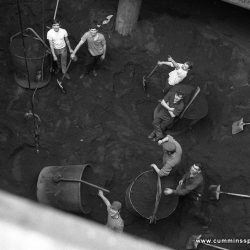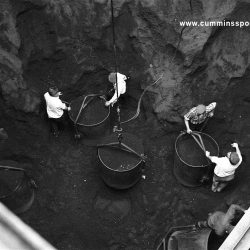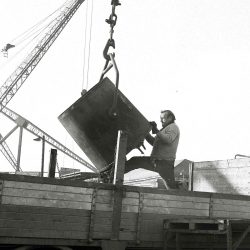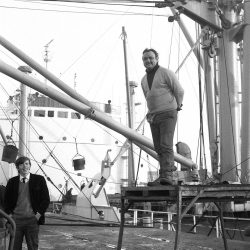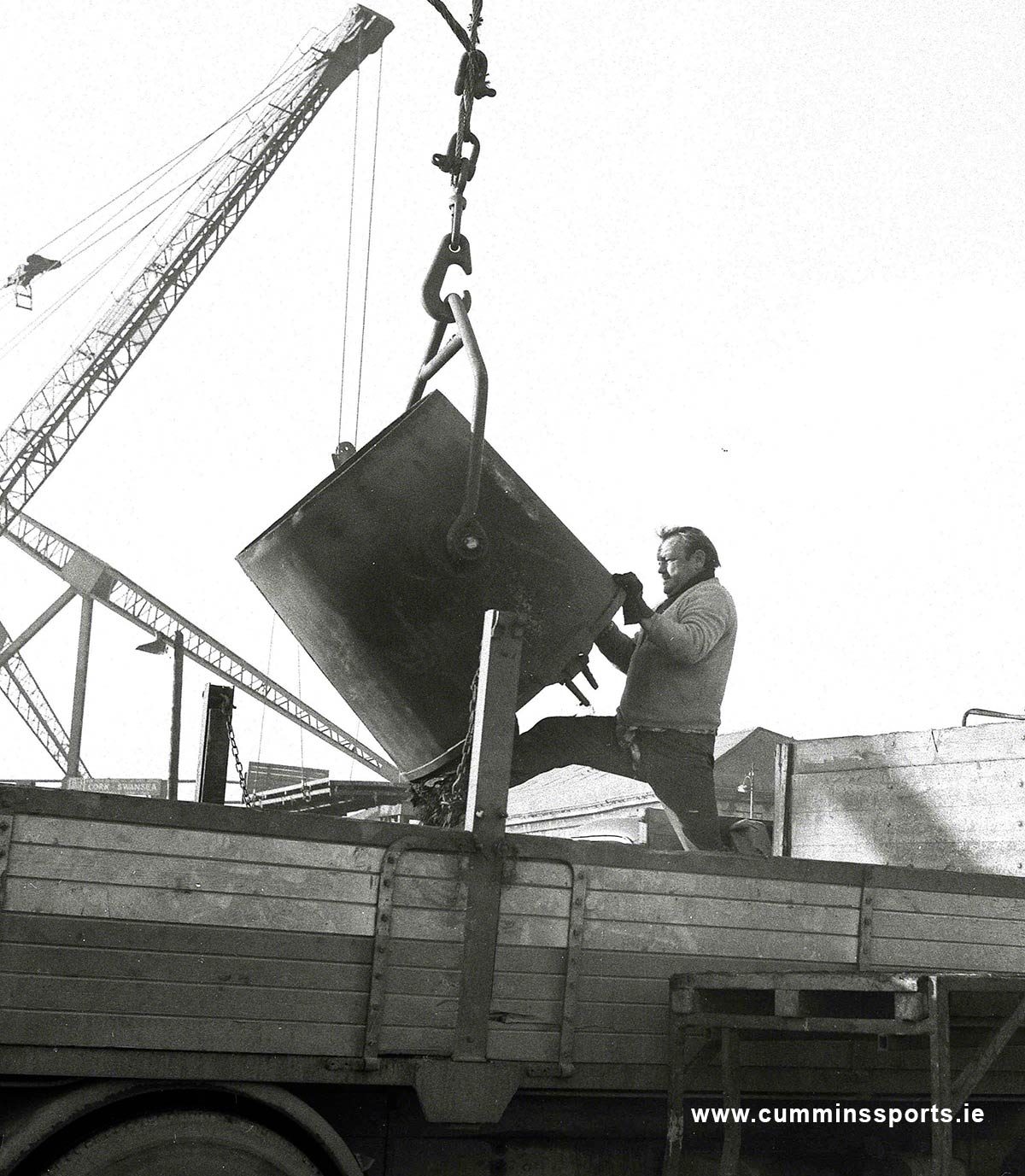
‘Down the Docks’
For generations D.F. Doyle have been the pre-eminent stevedoring company in the Port of Cork and in 1967, while still a student in UCC, I presented myself at their offices near the quays and asked permission to photograph their dockers at work on a ship. It may have been my college scarf that won them over but the girls in the office gave me the thumbs up without even bothering to check with a supervisor. I probably looked – and was – harmless.
It may have been my college scarf that won them over but the girls in the office gave me the thumbs up without even bothering to check with a supervisor.
The River Lee dominates the city and its two channels cradle the city from the Lee Fields on the west, where it splits in two, to the docklands in the east, where the channels unite once again at the back of the railway station. This was the site of ‘The Docks’, the highest navigable point of the river where merchant ships used tie-up. It was here I arrived on a summer morning and was introduced to a world I simply knew nothing about.
A ship load of coal dust was in the process of being unloaded on to lorries queued up on the quayside, to be ferried away to several foundries scattered around Cork City and county for use in blast furnaces. The largest, of course, was Irish Steel in Haulbowline, but Merricks in Parnell Place, McBrides on the Kinsale Road and The Hive metalworks on Hanover Quay also had blast furnaces on site – all, alas, now long gone.
In fact, amazingly, some of the lads were smoking cigarettes as they worked! How they got away without blowing themselves – or the ship – up, is a mystery.
The work of shovelling the coal dust into huge buckets was done by hand by about ten men deep in the bowels of the ship. The buckets were then hauled out of the ship’s hold by crane to the waiting lorries. Looking down into the deep dark hold was like looking into Dante’s Inferno, yet the lads below were cheerful enough and ‘hammed’ it up for the camera when they saw me above them.
I don’t think Health & Safety as a science had caught on yet at that time.
They were dressed in casual clothes – some even in white shirts!! – and there wasn’t a hard hat or a fluorescent jacket in sight. In fact, amazingly, some of the lads were smoking cigarettes as they worked! How they got away without blowing themselves – or the ship – up, is a mystery. I don’t think Health & Safety as a science had caught on yet at that time.
Different times indeed!

